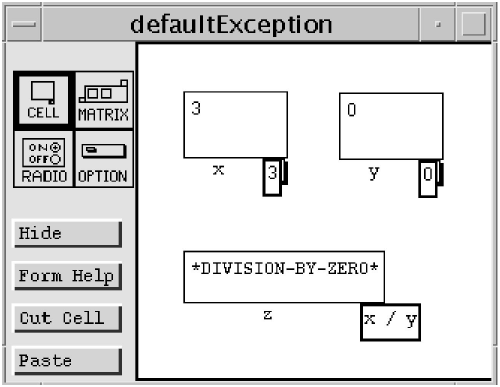Authors
Margaret Burnett, Anurag Agrawal, & Pieter van Zee
Abstract
Exception handling is widely regarded as a necessity in programming languages today and almost every programming language currently used for professional software development supports some form of it.
However, spreadsheet systems, which may be the most widely used type of "programming language" today in terms of number of users using it to create "programs" (spreadsheets), have traditionally had only extremely limited support for exception handling.
Spreadsheet system users range from end users to professional programmers and this wide range suggests that an approach to exception handling for spreadsheet systems needs to be compatible with the equational reasoning model of spreadsheet formulas, yet feature expressive power comparable to that found in other programming languages.
In this paper, we present an approach to exception handling for spreadsheet system users that is aimed at this goal. Some of the features of the approach are new; others are not new, but their effects on the programming language properties of spreadsheet systems have not been discussed before in the literature.
We explore these properties, offer our solutions to problems that arise with these properties, and compare the functionality of the approach with that of exception handling approaches in other languages.
Sample

A Forms/3 spreadsheet with three cells demonstrates the error value model for built-in exceptions.
In Forms/3, the spreadsheet creator can provide optional names for the cells, such as x, y, and z. Also, any cell's formula can be displayed with the cell's value, as has been done here for all three cells simultaneously.
Publication
2000, IEEE Transactions on Software Engineering, Volume 26, Number 10, October, pages 923-942
